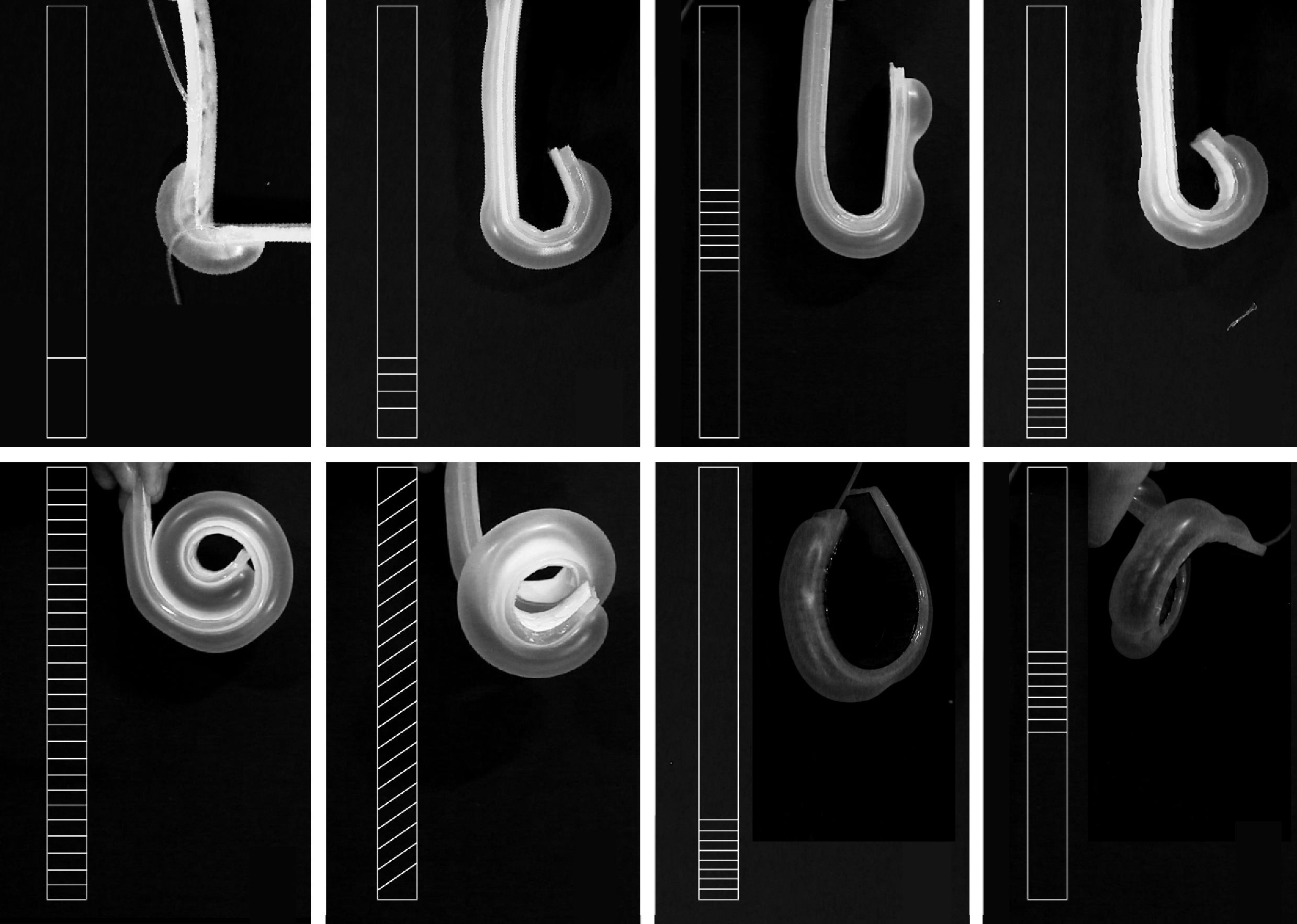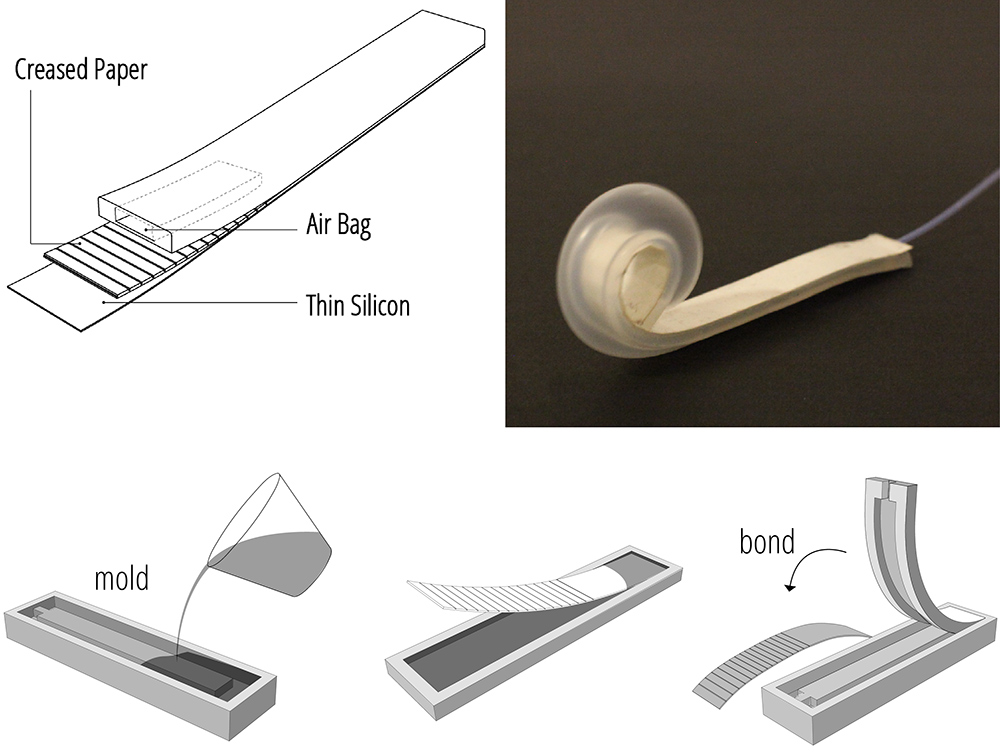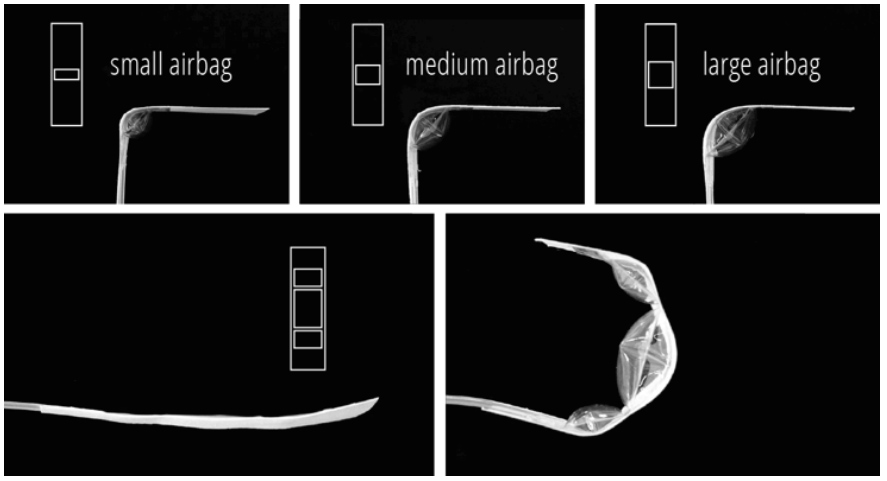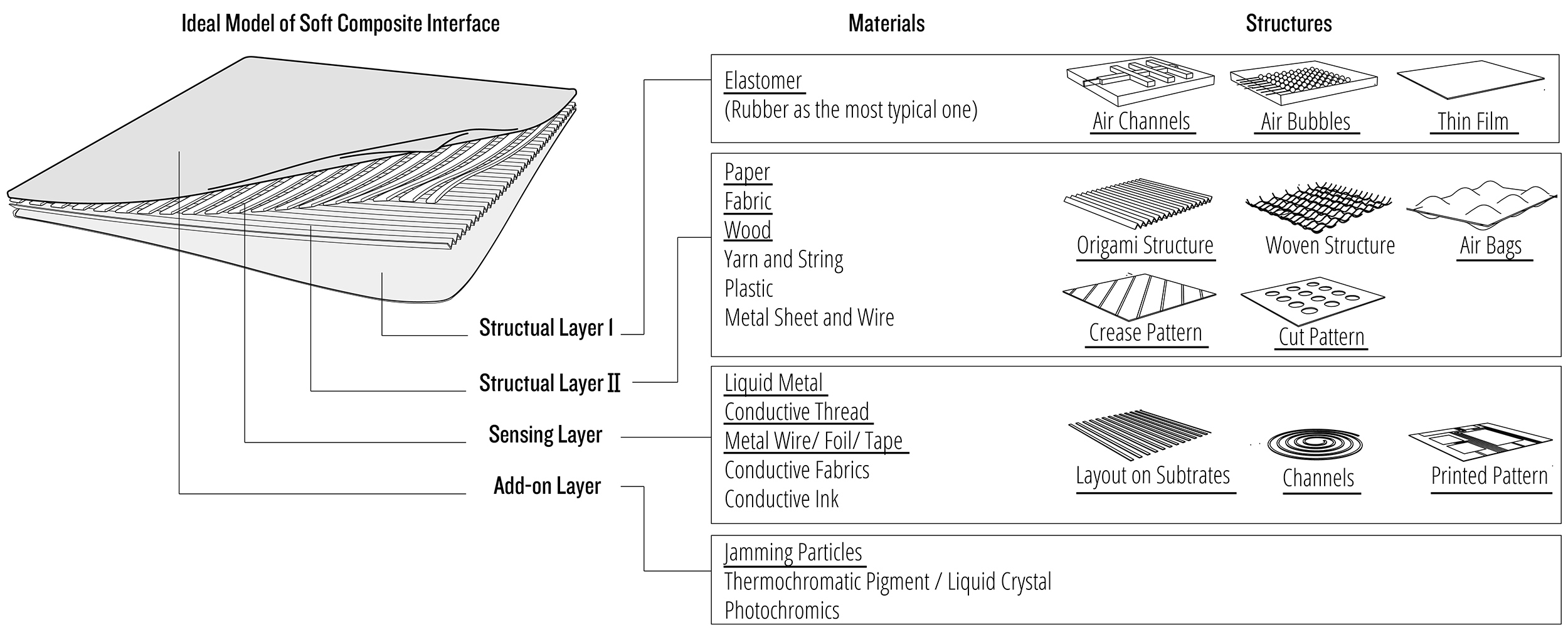(Up) The dynamic control of the curvature is determined by two factors: air pressure and crease pattern. First, air pressure can control the degree of curvature. Second, the design of paper crease patterns will affect the deformation. We vary three factors of crease patterns in our experiments: density, location and angle. Low-density creases enable sharper bends and, by vary- ing the location of crease, we can control the bending location on the surface. Laying out the crease lines diagonally generates helical shapes instead of curling on a single plane.




